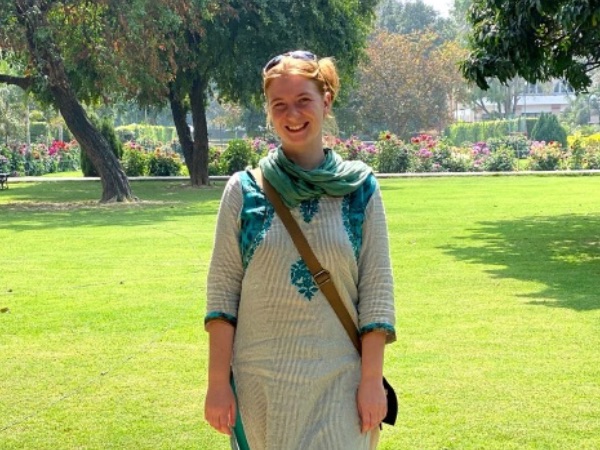I arrived at SINI as an English teacher in January 2018, five years into the EDP program. It was five years into the inception of the EDP program, and there was a sentiment among the teachers and administration that the results of the program were not aligning with its goals or the desires of the students. An alternative curriculum needed to be developed. At the time, classes used general English textbooks and English-medium Dharma materials. The English content was often irrelevant or uninteresting, and the Dharma materials were inaccessible to lower-level students. We held meetings to discuss a bespoke curriculum that could meet student needs and provide comprehensive language learning. We all agreed it was crucial, but the idea stayed on hold as daily responsibilities took priority.
The First Iteration and the Creation of EDP
The opportunity to advance the idea came in the summer of 2018, when I undertook my Cambridge DELTA certification, a postgraduate diploma for English language teachers. One requirement was to create a course proposal for a specific context and student group. I chose SINI students and designed the first iteration of what would become EDP. Looking back, it bears little resemblance to the final product—it was a 20-hour short course—but many of the same threads were later woven into EDP.
Real momentum didn’t begin until 2020, when COVID-19 disrupted the program. Our teachers left India, students were under lockdown, and classes moved online thanks to volunteer teachers and conversation partners. While the world was in turmoil from the pandemic, it created one unexpected opportunity: the time and space to create SINI’s own textbook series for the benefit of our students. I officially began the project in May 2021.
The Creative Process: A Jigsaw Puzzle
“It felt like assembling a jigsaw puzzle when you’ve lost the box and you have no idea what the final picture is supposed to look like.”
Now that the series is completed, it’s tempting to revise my memories of the process and imagine that everything came together easily. In reality, it felt like assembling a jigsaw puzzle when you’ve lost the box and you have no idea what the final picture is supposed to look like. I remember sketching out topics that the students and I had identified as important, such as the life story of the Buddha – a perfect place to learn the past simple. Neuroscience, a topic students were fascinated by, was much more complex, so it was placed in the highest level. Over time, topics merged, split apart, changed, or were set aside completely. For example, there isn’t a full unit on the Four Immeasurables anymore, but students still learn how to talk about them in a different unit.
The Reality of Writing EDP Textbooks
I’ve often been asked how I wrote the EDP textbooks. The truth is, it varies. Sometimes inspiration strikes, and you have a clear idea of resources, activities, and language targets to use – those moments often happen when I’m deep in the woods with my computer an hour away from everything. Other days, I stare at a blank screen, convinced I’ve never had an original thought. And usually, the reality lies somewhere in between: determinedly plugging away, progressing bit by bit, until a whole lesson, unit, or level is created—and then repeating that process until all three levels are completed.
I completed the first draft of all three EDP textbooks in June 2024, three years after the project began. The first pilot class finished shortly after, in August. EDP has moved beyond just a wish, a concept, and a proposal and is now a reality. Students use printed copies in class, learning English through the lens of the Dharma. Other programs working with Buddhist monastics have reached out to learn how they might use the materials too.
Someday soon, the EDP textbook series will be available in its final form—published with a full student book, teacher’s book, and accompanying audio resources. But far from being a static document, I know that EDP will continue to evolve as a dynamic educational resource, designed to guide students along their paths and respond to their needs. As educators and supporters of education, we want our students to eventually move beyond the need for a guide and walk on their own. It is my hope that current and future students of EDP will apply the language skills they learn through this program to their own paths—whether as teachers, translators, or Dharma practitioners.
